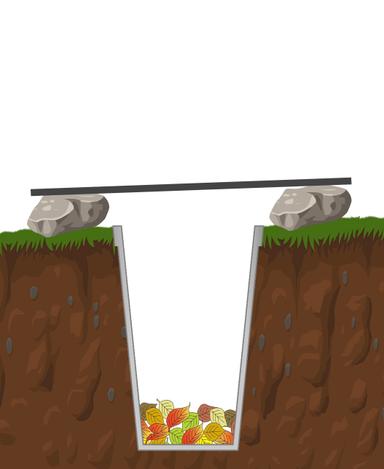Ecological sampling of living organisms
I can describe and choose suitable methods to sample populations of plants or animals.
Ecological sampling of living organisms
I can describe and choose suitable methods to sample populations of plants or animals.
These resources will be removed by end of Summer Term 2025.
Switch to our new teaching resources now - designed by teachers and leading subject experts, and tested in classrooms.
These resources were created for remote use during the pandemic and are not designed for classroom teaching.
Lesson details
Key learning points
- Sampling is used to obtain estimates of populations within an area because it would be impossible to count them all.
- There are lots of different sampling methods that can be used to sample plants and animals.
- Sampling is essential for conservation to monitor populations and compare them.
Keywords
Quadrat - A quadrat is a square frame which is used to sample populations of plants or slow-moving animals.
Pooter - A pooter is a piece of equipment used to suck up and sample small animals.
Mark-release-recapture - Mark-release-recapture is a way that is used to estimate the number of individuals in a population.
Pitfall trap - A pitfall trap is used to sample small ground living animals.
Sampling - Sampling is a survey of plants and/or animals which provides information about the populations of organisms.
Common misconception
Pupils often associate the use of quadrats to survey plants in one type of habitat. Pupils do not consider how they can be used to sample sedentary animals, e.g. barnacles or limpets on a rocky shore.
During the slidedeck there is reference to how quadrats can be used to sample plants and sedentary animals in different habitats.
To help you plan your year 8 science lesson on: Ecological sampling of living organisms, download all teaching resources for free and adapt to suit your pupils' needs...
To help you plan your year 8 science lesson on: Ecological sampling of living organisms, download all teaching resources for free and adapt to suit your pupils' needs.
The starter quiz will activate and check your pupils' prior knowledge, with versions available both with and without answers in PDF format.
We use learning cycles to break down learning into key concepts or ideas linked to the learning outcome. Each learning cycle features explanations with checks for understanding and practice tasks with feedback. All of this is found in our slide decks, ready for you to download and edit. The practice tasks are also available as printable worksheets and some lessons have additional materials with extra material you might need for teaching the lesson.
The assessment exit quiz will test your pupils' understanding of the key learning points.
Our video is a tool for planning, showing how other teachers might teach the lesson, offering helpful tips, modelled explanations and inspiration for your own delivery in the classroom. Plus, you can set it as homework or revision for pupils and keep their learning on track by sharing an online pupil version of this lesson.
Explore more key stage 3 science lessons from the Biodiversity unit, dive into the full secondary science curriculum, or learn more about lesson planning.

Equipment
Licence
Starter quiz
6 Questions
the range of different species that live in a place
where an organism lives
activities that protect biodiversity and the environment
the permanent loss of a species

helps a plant get water from deep underground
helps to insulate an organism in a cold environment
helps by preventing sinking into soft ground such as sand
helps to trap more light to make food
helps to protect against being eaten
Exit quiz
6 Questions




